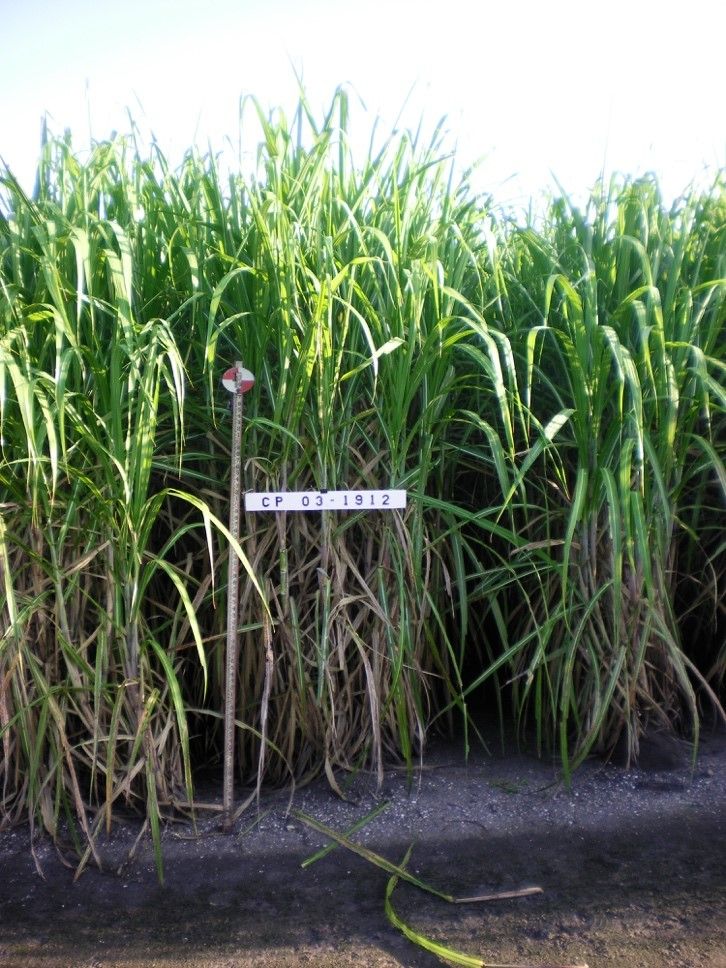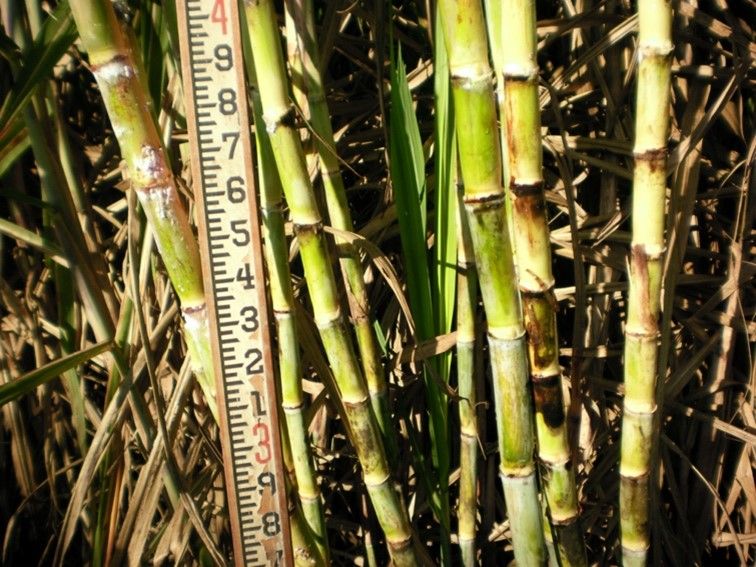Sugarcane is cultivated on approximately 408,000 acres in Florida, with almost 30% of this total acreage on sand soil and the rest on muck soil (VanWeelden et al. 2023). The sugarcane cultivation on sand soil (mostly Immokalee fine sand with <2% organic matter) is expanding since the area under citrus cultivation started decreasing due to citrus greening disease. Due to sugarcane expansion on sand soil, several new cultivars have been developed only for sand soil. Sugarcane cultivar CP 03-1912 (Gilbert et al. 2011) was developed through cooperative research conducted by the USDA-ARS, UF/IFAS, and the Florida Sugar Cane League and was released for commercial cultivation in Florida in 2011. CP 03-1912 was released for sand soils due to its high cane yield and acceptable level of sucrose concentration. In addition, CP 03-1912 is resistant to most of the common sugarcane diseases in Florida. The parents of CP 03-1912 (CP 92-1167 x CP 95-1039) were not released as commercial cultivars in Florida, but two grandparents, CP 81-1238 (Miller et al. 1994) and CP 84-1591 (Shine et al. 1996) were released commercially to be cultivated on sand soils in Florida.
The purpose of this fact sheet is to provide basic information (Table 1) and yield and disease information (Table 2) for CP 03-1912 to assist growers in a decision-making process of whether to further expand acreage of this cultivar with a clearer expectation of potential insect pest and disease issues that may need to be addressed through pest management strategies.
CP 03-1912 is currently cultivated on approximately 11,000 acres, which accounts for almost 25% of total sugarcane acreage on sand soils in Florida. It is ranked fifth based on total acreage in Florida (VanWeelden et al. 2023). There was significant increase in CP 03-1912 acreage in recent years which indicates its potential of further expansion on sand soil. Based on the data collected from the final stage (Stage 4) of a sugarcane cultivar development program in Florida, the economic index or profitability of CP 03-1912 in a 3-year crop cycle was approximately $800 ha-1 greater than the commercial cultivar CP 78-1628 (Tai et al. 1991). However, significant freeze damage is possible due to low freeze tolerance of this cultivar. Growers need to be vigilant and should harvest this cultivar soon after any major freeze event to avoid significant deterioration in juice quality and sugar recovery.
CP 03-1912 has a good package of disease resistance in Florida (Table 2). Based on natural infection and artificial inoculation, CP 03-1912 is considered resistant to brown rust (caused by Puccinia melanocephala H. & P. Sydow), orange rust (caused by Puccinia kuehnii E.J. Butler), and sugarcane mosaic virus strain E (mosaic). Both rusts are very common in Florida; therefore, rust resistance is important to limit the use of fungicides and lower the production cost. In addition, this cultivar is moderately resistant to leaf scald (caused by Xanthomonas albilineans Ashby, Dowson), smut (caused by Ustilago scitaminea Sydow and P. Sydow), and ratoon stunt disease (caused by Leifsonia xyli subsp. xyli). However, CP 03-1912 is susceptible to sugarcane yellow leaf virus (SCYLV), like most of the other commercial sugarcane cultivars in Florida.
Overall, higher cane yield and complete or moderate resistance against major sugarcane diseases in Florida favor CP 03-1912 to be cultivated on sand soils in Florida.

Credit: Wayne Davidson, Florida Sugar Cane League.

Credit: Wayne Davidson, Florida Sugar Cane League
Table 1. Basic information on CP 03-1912.
Table 2. Yield parameters and disease reactions of CP 03-1912.
References
Gilbert, R. A., J. C. Comstock, B. Glaz, I. A. del Blanco, S. J. Edmé, R. W. Davidson, N. C. Glynn, S. Sood, D. Zhao, J. D. Miller, and P. Y. P. Tai. 2011. “Registration of ‘CP 03-1912’ Sugarcane.” Journal of Plant Registrations 5 (3): 318. https://doi.org/10.3198/jpr2011.02.0075crc
Miller, J. D., J. L. Dean, P. Y. P. Tai, E. R. Rice, and B. Glaz. 1982. “Registration of CP 73-1547 Sugarcane.” Crop Sci. 22:689. https://doi.org/10.2135/cropsci1982.0011183X002200030075x
Shine, J. M., Jr., C. W. Deren, P. Y. P. Tai, J. D. Miller, B. Glaz, and J. C. Comstock. 1996. “Registration of ‘CP 84-1591’ Sugarcane.” Crop Sci. 36:1075. https://doi.org/10.2135/cropsci1996.0011183X0036000400047x
Tai, P. Y. P., J. D. Miller, B. Glaz, C. W. Deren, and J. M. Shine, Jr. 1991. “Registration of ‘CP 78-1628’ Sugarcane.” Crop Sci. 31:236. https://doi.org/10.2135/cropsci1991.0011183X003100010067x
VanWeelden, M. T., C. Kammerer, W. Davidson, M. Baltazar, and R. Rice. 2023. “Sugarcane Variety Census: Florida 2022.” Sugar Journal 86 (2): 8–14.